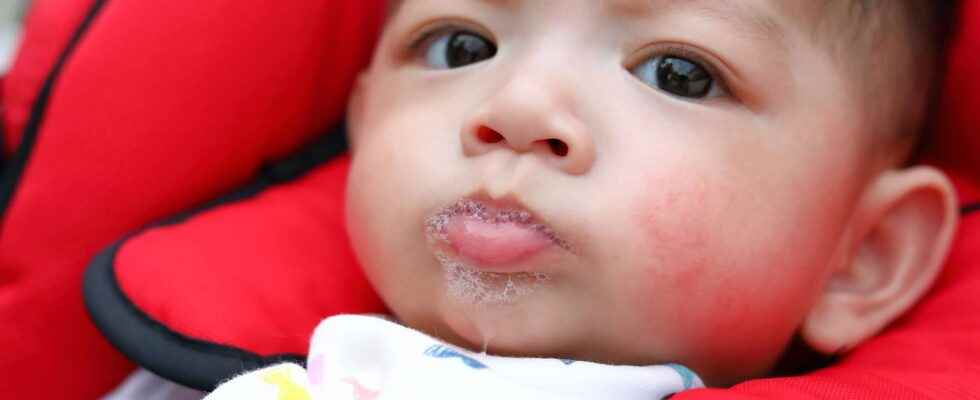Babies observe their surroundings carefully, especially when two people exchange saliva. According to MIT, this allows them to estimate the level of intimacy between them.
You will also be interested
[EN VIDÉO] A video to test the feeling of sympathy of babies In this video, the purpose of which is to test the feeling of sympathy of babies, two geometric shapes evolve on a screen. The blue ball represents the aggressor and hits the yellow square repeatedly.
Human beings are social animals and knowing who we can rely on or not is essential for our survival. For babies and young children, there is an indicator that lets you know if two people are close: the exchange of saliva. Whether it’s kissing, sharing food, or any other activity that involves saliva. This is the conclusion ofa study conducted at MIT which suggests that Babies use these signals to find out who around them is best able to offer them help. ” Babies don’t know in advance which relationships are close relationships, so they need to have a way of learning it by watching what’s going on around them. “, explains Rebecca Saxe, one of the scientists who carried out the study published in Science.
Saliva as an indicator of social bonding for babies
The researchers wanted to know if babies can determine if a strong or weak bond unites two people. Human beings who share a strong relationship, a family, a couple, brothers and sisters, are more likely to share bodily fluids, like saliva. The question being: is this a cue that babies use to understand their social environment? To answer this, the researchers observed toddlers, aged 16 to 18 months, and babies less than a year old, as actors interact with stuffed animals and dolls.
In the first situation, a doll shares an orange with one of the actors, then plays catch with a second. After this initial situation, the doll is put in a situation of distress, between the two actors. Researchers expect babies to look at the person most likely to help the doll. In most cases, children stare at the actor who shared an orange with the stuffed animal. The second situation is more centered around saliva, and reverse the roles. An actor puts his finger in his mouth or on his forehead before touching a doll and then simulates a distress situation. The baby preferentially fixes the doll with which the actor has had salivary contact.
For the MIT researchers, these observations suggest that the exchange of saliva allows babies and toddlers to estimate the level of intimacy of the relationship between two people.
Interested in what you just read?
